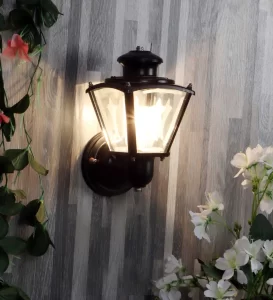Outdoor lighting plays a crucial role in enhancing the beauty, safety, and functionality of outdoor spaces. Here’s some information about outdoor lighting:

1. Benefits of Outdoor Lighting:
- Safety: Outdoor lighting helps improve visibility and reduces the risk of accidents by illuminating pathways, steps, and potential hazards.
- Security: Well-placed outdoor lighting can deter trespassers and provide a sense of security by illuminating entry points and vulnerable areas.
- Aesthetics: Outdoor lighting can enhance the beauty of your landscape, architectural features, and outdoor decor by highlighting focal points, trees, plants, and water features.
- Extended Use of Outdoor Spaces: Proper lighting allows you to use your outdoor spaces, such as patios, decks, and gardens, even after the sun sets, providing a welcoming and inviting atmosphere.
- Increased Property Value: Thoughtfully designed and installed outdoor lighting can boost the curb appeal and value of your property.
2. Types of Outdoor Lighting Fixtures:

- Path Lights: These low-level lights are installed along pathways, driveways, or stairs to provide safe and guided movement.
- Spotlights and Floodlights: These fixtures produce a bright, focused beam of light to highlight specific areas, trees, or architectural features.
- Wall Lights and Sconces: Mounted on exterior walls, these lights provide both functional and decorative illumination for entrances, porches, and outdoor seating areas.
- String Lights: These versatile lights create a whimsical and festive ambiance when draped along pergolas, fences, or trees.
- Post Lights and Lanterns: These taller fixtures are often used to illuminate driveways, walkways, or garden areas, adding a classic or decorative touch.
- Deck and Step Lights: Installed on deck posts or along stair risers, these lights improve safety and visibility on outdoor decks and stairs.
- Landscape Lighting: These lights are used to highlight specific landscape features, such as trees, shrubs, flower beds, or water features.
3. Lighting Techniques for Outdoor Spaces:
- Ambient Lighting: Provides overall illumination to create a comfortable and inviting atmosphere for larger outdoor areas.
- Task Lighting: Focused lighting used for specific tasks, such as grilling, reading, or working in an outdoor workspace.
- Accent Lighting: Highlights specific objects, plants, or architectural elements, adding depth and visual interest to your outdoor space.
- Silhouetting: This technique involves placing a light source behind an object to create a dramatic silhouette effect.
- Moonlighting: Involves mounting lights high in trees to simulate the natural illumination of moonlight, casting soft and diffused light.
4. Energy Efficiency and Sustainability:

- LED Lighting: LED (Light Emitting Diode) lights are highly energy-efficient, long-lasting, and environmentally friendly. They consume less electricity and have a longer lifespan compared to traditional bulbs.
- Solar-Powered Lighting: Solar-powered outdoor lights use energy from the sun to charge built-in batteries, providing illumination without the need for wiring or electricity.
5. Lighting Control Options:
- Manual Switches: Traditional on/off switches are controlled manually.
- Timers: Set timers to automatically turn on and off the outdoor lights at specific times.
- Motion Sensors: Lights equipped with motion sensors detect movement and turn on automatically, providing security and energy efficiency.
- Smart Lighting Systems: Control your outdoor lights remotely using smartphone apps or voice assistants, allowing for customizable schedules, dimming, and color changes.
When planning your outdoor lighting, consider the specific needs and characteristics of your outdoor space, the desired ambiance, and any local regulations or guidelines. It’s recommended to consult with a professional electrician or lighting designer for proper installation and to ensure the best lighting design for your specific requirements.

